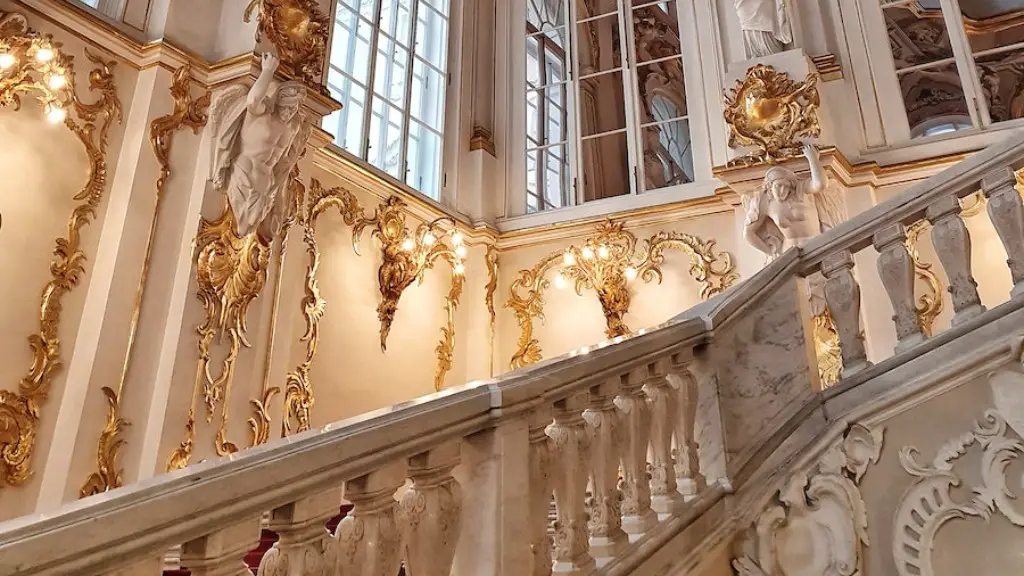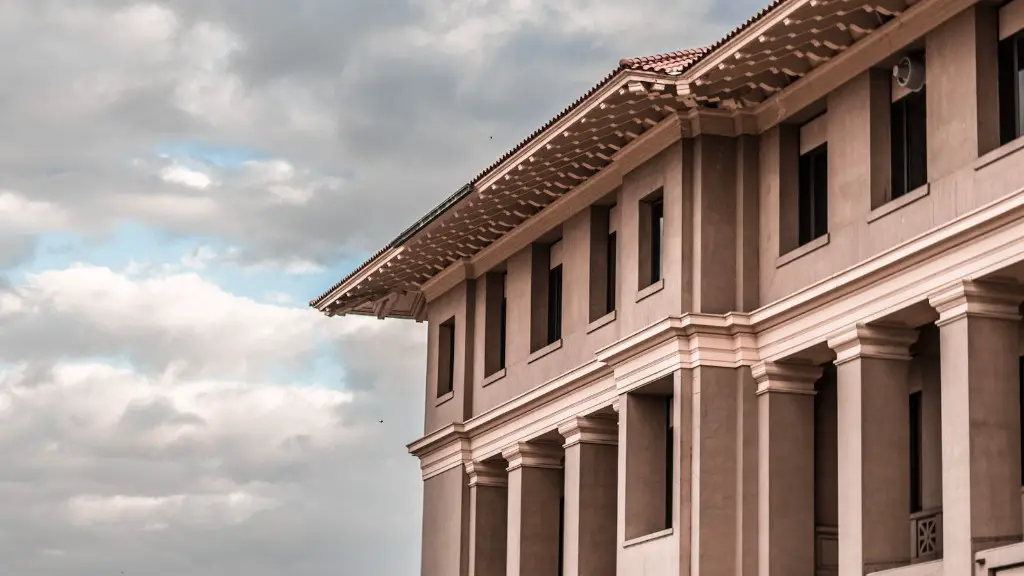How did Greek architecture influence the world? This question can be answered in many ways, but one of the most obvious ways is through its lasting influence on Western architecture. Greek architecture is characterized by its highly formalized characteristics, such as its strict attention to proportion and symmetry. These features have been emulated by architects in the Western world for centuries, and continue to be an important part of our architectural heritage.
The influence of Greek architecture can be seen in many different ways. One of the most obvious ways is in the Roman architecture that came after it. The Romans borrowed heavily from the Greeks, and many of the features that we think of as being characteristic of Roman architecture are actually of Greek origin. Other ways that Greek architecture has influenced the world include the spread of ideas about beauty and proportion, and the use of classical orders in architecture.
Why is Greek architecture important today?
Ancient Greece’s architecture has had a strong influence on modern architects, as they have been able to take classical and modern design elements from it and incorporate them into their own work. Some of the most notable examples of this can be seen in the Neoclassical, Georgian Revival, Federal and Beaux-Arts styles, all of which have been heavily influenced by both Roman and Greek architecture.
Greek architecture is renowned for its tall columns, intricate detail, symmetry, harmony, and balance. The Greeks built all sorts of buildings, but the main examples of Greek architecture that survive today are the large temples they built to their gods. Greek temples were typically built on high ground, surrounded by columns, and fronted by a large, ornate entrance. Inside, the temple was divided into two main chambers: the naos, where the statue of the god was housed, and the opisthodomos, where offerings were made. Greek temples were designed to be awe-inspiring and to reflect the glory of the gods.
How did Greek architecture influence modern architecture
The colonnade is a popular architectural style that features a row of columns supporting an entablature. This entablature typically includes the architrave, frieze, and cornice. The columns are usually the base that supports a roof. The colonnade is one of the main features that immediately harkens back to ancient Greek architecture.
The Greeks were a very innovative and creative people. They invented many things that we now take for granted, such as mathematics, sculpture, philosophy, science, and medicine. They also used their knowledge to create useful inventions like the water wheel, the alarm clock, the catapult, and even the vending machine!
How did the Greek influence our society?
The Greeks have made significant contributions to a number of different fields, most notably philosophy, mathematics, astronomy, and medicine. Additionally, literature and theatre were very important aspects of Greek culture and have had a lasting impact on modern drama. The Greeks were also known for their sophisticated sculpture and architecture. All of these factors combined make the Greeks one of the most influential cultures in history.
The Parthenon is one of the most famous landmarks in the world and is generally regarded as the most influential building in Greek history. It stands on the citadel of the Athenian Acropolis in Greece and construction began in 447 BC. The Parthenon was originally built to house the statue of Athena Parthenos, the goddess of wisdom and warfare, but it also served as a treasury and a place of worship. The temple was severely damaged by the Persians in 480 BC and was later rebuilt by the Athenians. It was then destroyed by the Romans in AD426 and was partially restored in the late 19th century.
What is the most significant contribution of architecture?
Architecture is more than just the buildings we live and work in – it’s also a reflection of our culture and how we see ourselves and the world around us. Good architecture can inspire and uplift us, while bad architecture can be a source of stress and anxiety.
There are many reasons why architecture is so important. First, our built environment has a huge impact on our physical and mental health. well-designed buildings and spaces can help us to stay healthy and productive, while poorly designed ones can make us sick and stressed.
Second, architecture is a major driver of economic growth. Good architecture can make cities more livable and attractive to businesses and residents, while bad architecture can drive businesses and residents away.
Third, architecture is an important part of our identity. The way we build our cities and towns says a lot about who we are as a people. Our buildings and public spaces are like a blank canvas that we can use to express our creativity, our values, and our vision for the future.
Fourth, architecture can be a force for social good. Good design can help to solve social problems, improve environmental conditions, and create inclusive and accessible spaces for all.
Finally, architecture is a way of
The Romans heavily relied on Greek models when it came to architecture and art. They would often construct buildings and homes that incorporated Greek styles, such as colonnades and rectangular designs. Essentially, all aspects of Roman life, from furniture to houses to colonnades, were based on Greek models. This helped to create a sense of uniformity and order throughout the Roman Empire.
What is the biggest influence of Greek culture in the modern world
The principles behind the ancient Greeks’ democratic system of government are still in use today. The United States and many other countries throughout the modern world have adopted democratic governments to give a voice to their people. Democracy provides citizens the opportunity to elect officials to represent them. This system of government ensures that all voices are heard and that everyone has a say in how their country is run.
Renaissance architecture is characterized by its symmetry, proportion, and geometry—features that were largely absent in Gothic architecture. As a result, Renaissance buildings tend to look more ordered andrational than their Gothic counterparts. This shift from the ornate and asymmetrical Gothic style to the more classical and symmetrical Renaissance style reflected the changing values of European society during the Renaissance. The Renaissance was a time of great cultural and social change, and the new architectural style mirrored the growing emphasis on reason and individualism that characterized this period.
What innovations did Greek architecture have?
The Greek architectural style is characterized by its use of columns. Columns are Vertical posts that support the roof or upper floors of a building. The three most common types of columns used in Greek architecture are Doric, Ionic, and Corinthian. Doric columns are the simplest type of column, with a plain shaft and a capital (the top part of the column) that is decorated with scroll-like carvings (called volutes). Ionic columns are slightly more ornate, with a shaft that is fluted (has shallow grooves cut into it) and a capital that is decorated with two large scroll-like carvings (volutes). Corinthian columns are the most ornate type of column, with a fluted shaft and a capital that is decorated with intricate carvings of leaves and flowers.
The Greek and Roman civilizations were some of the most influential cultures of their time. Almost every part of today’s world has been impacted in some way by these two civilizations. From government and language to architecture and science, the Greeks and Romans have left their mark on the world. Additionally, the successes of these two cultures have led many countries to model their own public facilities and systems after those found in Greece and Rome.
What Greek influences still exist today
There are many Greek influences that have had a big impact on our lives today. One of the most important is democracy. The system of government that the Greeks developed is one that is still used by many countries today. The alphabet is another Greek influence that has had a big impact on our lives. It is the basis for many of the world’s major languages. Science and math are also fields that have been heavily influenced by the Greeks. The Olympic Games are another Greek influence that is still very relevant today. And finally, Greek architecture has had a big impact on the way our buildings look today.
The Parthenon is a Greek temple that was built between 447 and 438 BC. It is located on the Acropolis of Athens and is the most important surviving building of Classical Greece. The Parthenon is widely considered one of the most influential buildings in the history of architecture.
What are 3 characteristics of Greek architecture?
The three most well-known and widely-used orders in Greek architecture are the Doric, Ionic, and Corinthian orders. The Doric order is characterized by its simple and sturdy appearance, with its plain capitals (tops of columns). The Ionic order is more ornate, with its carved capitals and decorative details. The Corinthian order is the most elaborate and intricate of the three, with its highly-detailed capitals featuring carved acanthus leaves.
Here are some fun facts about ancient Greek architecture:
-Roofs were usually built with a very slight slope
-Most temples were built on a base that consisted of two or three steps
-Even though they look very plain now, most Greek temples were painted with extremely bright colors
Final Words
The influence of Greek architecture can be seen in many different ways. One way is through the use of columns. Columns were used in Greek architecture to support the weight of the roof. This style of column is called a Doric column. The Doric column was the earliest column used in Greek architecture. It is characterized by its plain, round cap and its lack of a base. The Doric column was used in the Parthenon, which is one of the most famous buildings in the world. The Parthenon is a temple dedicated to the goddess Athena. It was built in the 5th century BC on the Acropolis in Athens. The Parthenon is considered to be one of the finest examples of Greek architecture. It has been copied many times and has influenced the design of many buildings, including the United States Capitol and the White House.
Greek architecture has had a profound influence on subsequent architectural styles in the Western world. Many of the most iconic buildings and structures in the Western world, such as the Parthenon and the Coliseum, are based on Greek architectural principles. Even today, many architects continue to be inspired by Greek architecture when designing new buildings.





